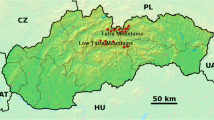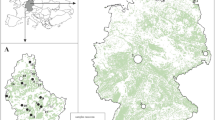Abstract
Hair samples of 15 adult male Atlantic walruses (Odobenus rosmarus rosmarus) collected from anaesthetized individuals at Svalbard, Norway, were analysed for cadmium and total mercury. The mean level of cadmium was 0.860 ± 0.321 μg/g dry weight (median = 0.811, range = 0.349–1.51 μg/g dry weight) and the mean level of mercury was 0.235 ± 0.100 μg/g dry weight (median = 0.251, range = 0.121–0.424 μg/g dry weight). Levels of cadmium and mercury in hair of walruses from other areas are not known. Both cadmium and mercury levels in hair of walruses from Svalbard are relatively low compared to the levels found in the hair of other marine mammal species. It has been documented from a number of marine species, including marine mammals such as ringed seals and polar bears, that both cadmium and mercury levels at Svalbard are lower than in other areas. It is uncertain as to what degree levels in hair reflect levels in internal organs in walruses. In rare and highly endangered species or populations tissue samples can be difficult to collect. In walruses, it is possible to collect hair from anaesthetized individuals or at the haul-out sites during moult, to monitor heavy metal levels of the population.
Similar content being viewed by others
Author information
Authors and Affiliations
Additional information
Accepted: 6 December 1998
Rights and permissions
About this article
Cite this article
Wiig, Ø., Renzoni, A. & Gjertz, I. Levels of cadmium and mercury in the hair of Atlantic walruses (Odobenus rosmarus rosmarus) from Svalbard, Norway. Polar Biol 21, 343–346 (1999). https://doi.org/10.1007/s003000050371
Issue Date:
DOI: https://doi.org/10.1007/s003000050371




